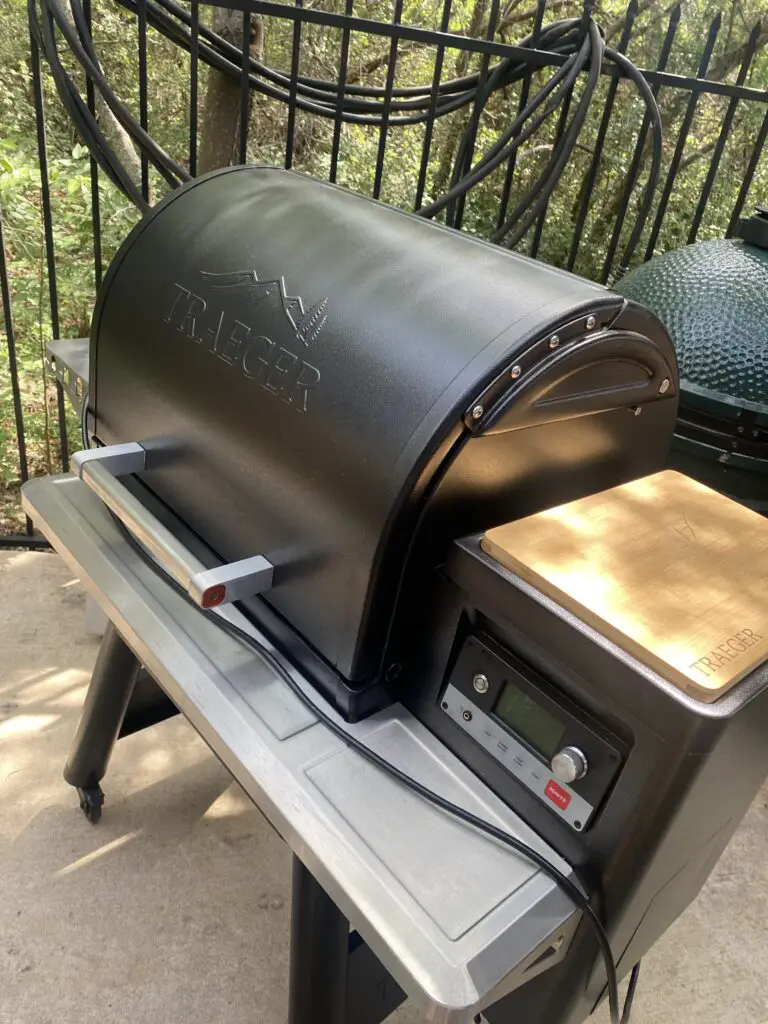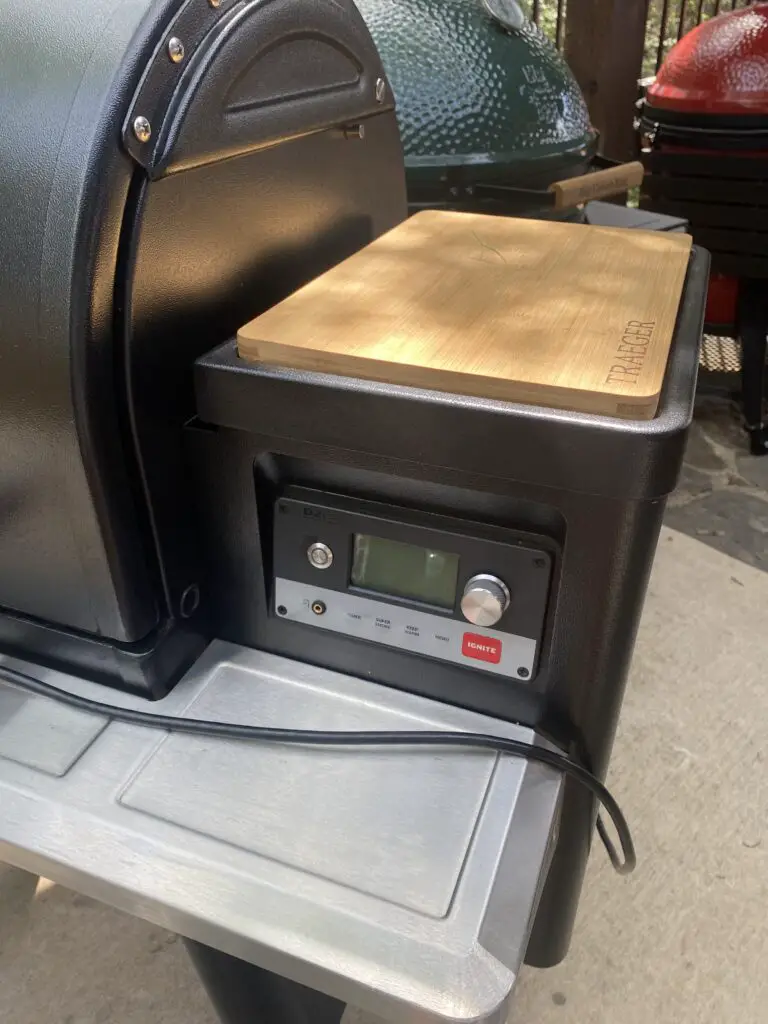We strive to provide you with authoritative, trustworthy, and expert advice. In doing so, the staff at bbqdropout.com performs extensive research, editing, and fact checking to every post on this webiste. If you feel that this article can improve, please feel free to reach us at staff@bbqdropout.com
Before continuing this article, I wanted to let you know that I have a YouTube channel where I showcase all sorts of video content related to BBQ. Subscribing would mean a lot to me, and I very much appreicate all the support!
As any Traeger owner knows, wood pellets are the key to achieving that perfect flavor in your food.
But what many don’t realize is that the dust from these pellets can actually be very harmful to your health.
Pellet dust is full of tiny particles that can quickly become lodged in your lungs.
Inhaling even a small amount of this dust can cause irritation and inflammation. Over time, it can even lead to more serious respiratory problems like bronchitis or pneumonia.
So how do you protect yourself from pellet dust?

The best way is to use a high-quality air filter when cooking with your Traeger. This will help remove the majority of the dust before it has a chance to enter your lungs.
You should also make sure to clean your grill regularly. This will help prevent the buildup of dust and keep your cooking area free of harmful contaminants.
By following these simple tips, you can enjoy all the benefits of cooking with a Traeger without putting your health at risk.
So don’t let pellet dust get in the way of your next backyard barbecue; make sure to take precautions and stay safe!
Why is There Dust in My Pellet Grill?
You’re not alone if you’ve ever noticed fine dust on your food after cooking it on a pellet grill.
Many grillers have seen this phenomenon and often wonder where the dust comes from.
The short answer is that the dust is most likely coming from the pellets themselves.
Pellets are made of compressed wood, and as they burn, they release small particles of dust into the air. This dust can settle on food and cause that familiar powdery film.

There are a few things you can do to minimize the amount of dust in your pellet grill. First, make sure to clean your grill regularly. A good scrubbing with soapy water will help remove any built-up residue from previous cookouts.
Another tip is to try a different brand of pellets.
Some brands are better at producing less dust than others. Experiment until you find a brand that works best for you.
Finally, if you’re still seeing a lot of dust, it might be time to replace your grill grate.
A new grate will create a tighter seal with the pellet hopper, preventing as much dust from escaping.
If you follow these tips, you should see a noticeable reduction in the amount of dust in your pellet grill. Enjoy your next cookout without worrying about those pesky particles!
How Do You Get Dust Out of Wood Pellets?
Wood pellets are a great way to fuel your pellet grill, but they can be tricky. One of the biggest problems is that they produce a lot of dust. This dust can be difficult to clean up and even clog your grill’s burner.
Fortunately, you can do a few things to reduce the amount of dust produced by your wood pellets. Here are a few tips:

1. Use a dust collector: A dust collector is a device that attaches to your pellet grill and collects the dust produced by the pellets as they burn. This can help to reduce the amount of dust that gets into your grill and makes cleanup much more manageable.
2. Vacuum regularly: Vacuuming your pellet grill can also help reduce the amount of dust that gets into it. Be sure to vacuum the grill’s interior and the area around the grill where pellets may have spilled.
3. Use a damp cloth: When cleaning your pellet grill, use a damp cloth rather than a dry one. This will help to pick up any dust clinging to the grill’s surface.
4. Avoid using sawdust: Sawdust can be a great way to start a fire in your pellet grill, but it can also be a significant source of dust. If possible, try to avoid using sawdust in your pellets or use a finer grade of sawdust to reduce the amount of dust produced.
5. Store pellets in a dry place: When storing your wood pellets, keep them in a dry place. If they get wet, they will produce more dust when burned.
By following these tips, you can help to reduce the amount of dust produced by your wood pellets and make cleanup much easier.
How Do I Know if My Traeger Pellets are Bad?
If your Traeger pellets are covered in dust, they may be bad. Check the expiration date on the bag to see if they are still good. If the pellets are old, they may not burn as well.
To tell if your Traeger pellets are bad, look for these signs:
- The pellets are covered in dust.
- The expiration date on the bag has passed.
- The pellets are old and brittle.
- They don’t smell fresh anymore.
Are Traeger Pellets Toxic?
Traeger pellets are made of compressed sawdust and wood shavings.
The sawdust is usually a by-product of the lumber industry, while wood shavings come from furniture factories. Neither of these materials is considered toxic. However, some people may be allergic to the dust in the pellets.
Final Thoughts
We hope this article has helped clear the air on the topic of Traeger Pellets dust.
While it is true that there can be a fair amount of dust created when using a pellet smoker, there are definitely ways to mitigate the problem. One of these methods is guaranteed to work.
Robert is a certified Pitmaster, with over a decade of experience in smoking the best meats you’ll ever feast upon. He also has a Bachelor of Business Administration from the University of Texas at San Antonio. When he’s not researching technical topics, he’s most likely barbecuing in his backyard.
